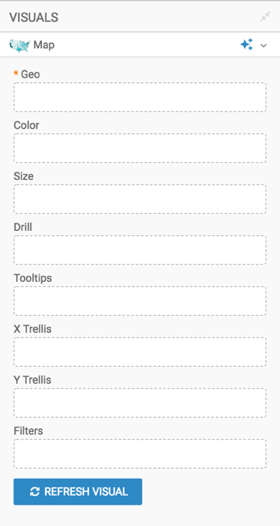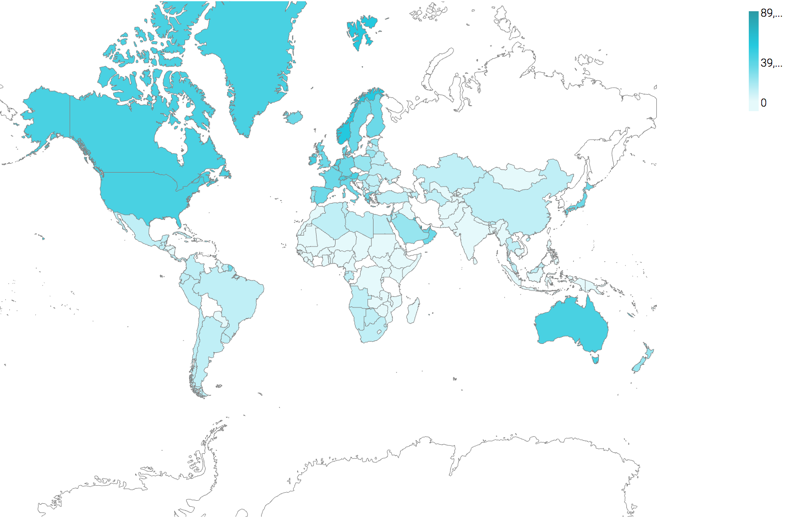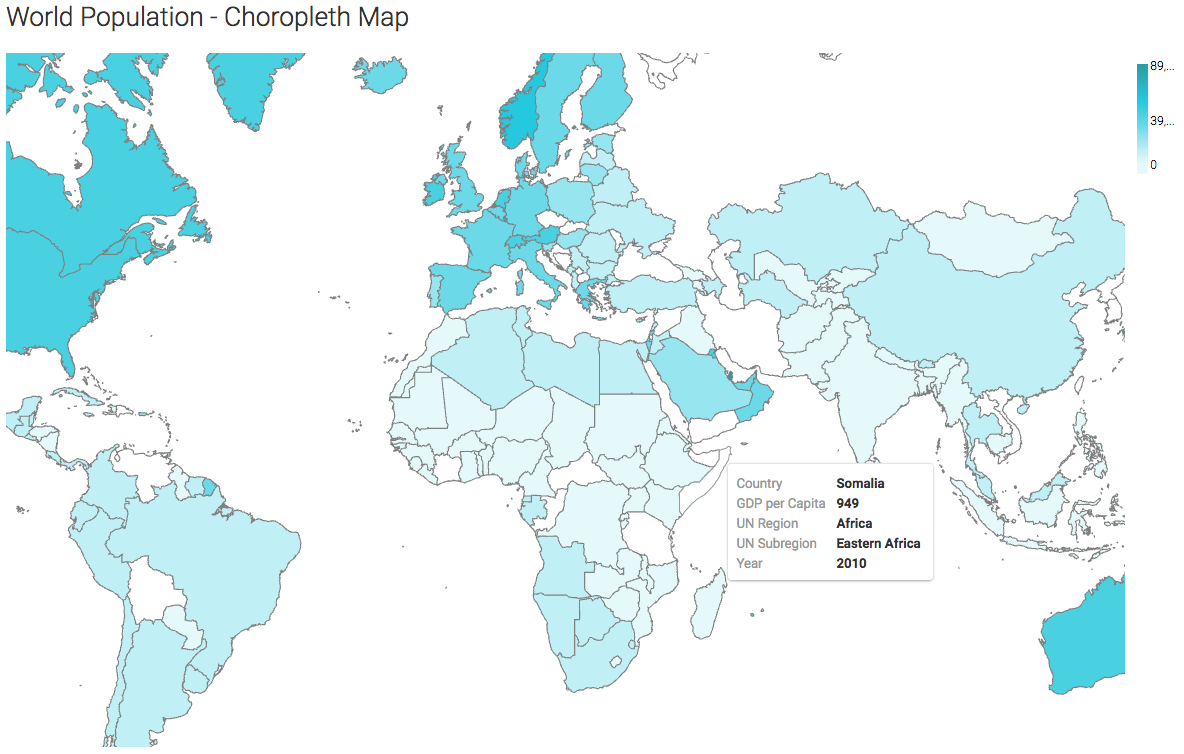Choropleth country map
Map visuals can show relative measurement values for countries as colored areas. A world map can be used to show a comparison of measurement values among countries. With data that meets ratio and statistical continuity guidelines, a choropleth map is a good chart choice.
The following steps demonstrate how to create a new map visual on the dataset World Life
Expectancy [data source samples.world_life_expectancy]. It produces
colored regions for the measurements that correspond to the country
field.







